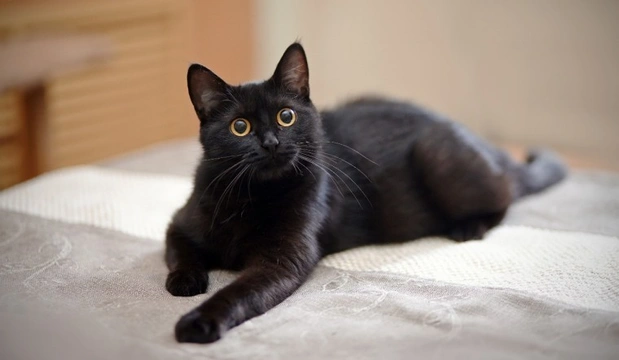
How to tell if fireworks and bonfire night are stressing your cat out – and why knowing is important
Cats are a very mysterious species, and they’re full of contrasts and contradictions. They can be both aloof and very loving and affectionate, adept hunters and hugely gentle with loved ones, and full of beans and silliness and of course, the world’s greatest sleepers!
Cats are also both hunters to some species, and prey animals to others; and this in turn has an impact on their natural behaviours and how they keep themselves safe.
Animals that are potential prey to other species (for instance, cats can be seen as potential prey to dogs, and some larger wildlife in other countries) evolve certain traits and behaviours that help them to survive, and a large part of this involves making themselves difficult to read by other, more threatening species.
In practice, this means that cats tend to mask their fear, and particularly, mask signs of pain or illness, which they do by hiding away or generally keeping out of the way – as fear, injury or sickness all single them out as weak and so, easier pickings as prey.
The same is true for stress and anxiety too, and all of this means that it can be very hard for us humans, who are rarely found in the prey role in modern life and that have evolved very differently to cats, to identify signs of stress, anxiety and upset in our cats.
However, when it comes to annual events like bonfire night or Guy Fawkes night when fireworks are in the offing, cats are highly likely to get very stressed out, and being able to identify the signs of this if it occurs in your own cat is important.
This is because a cat that is stressed and anxious might not behave in their normal way, and might actually endanger themselves or put themselves at risk, such as by trying to get outside when fireworks are going off, hiding somewhere dangerous, or running away. Additionally, stress and anxiety can have an impact on your cat’s general happiness and wellbeing, which naturally, all cat owners want to protect.
If you can learn to identify the signs of stress and anxiety in cats, you will be able to assess whether or not fireworks and bonfire night are having a negative impact on your cat; and so, work to both mitigate their stress levels and take steps to keep them safe.
With this in mind, this article will tell you how to identify if fireworks and bonfire night are stressing your cat out, and the warning signs to be alert for. Read on to learn more.
Hiding and avoiding interaction
A cat that is scared or stressed will withdraw from stimulus first and foremost, which will tend to mean that they will retreat to a bolt hole or secure bed or box that is closed in on as many sides as possible. They may hunch their body up, and will attempt to minimise movement, and make themselves look as small as possible.
They might not respond or respond only minimally if you attempt to pet them. Avoid disturbing them, as doing so will only unsettle them more.
Refusing food or treats
When a cat is anxious or scared, their digestive systems shut down in order to prepare the body for the potential need to fight or flee from an impending threat. This is the same effect many of us feel when we’re nervous too!
This means that a cat that is refusing food or favourite treats is apt to be either stressed or anxious, or potentially ill – and on bonfire night, stressed or anxious are the more likely culprits.
Signs of fear
Your cat’s body language might be taut, stiff, or their tail and fur bushed up, with their eyes wide, back arched, and tail erect. They might, on the other hand, have their paws and tail tucked in as tightly to their body as possible, making themselves seem as small as possible.
Circling, meowing, and other erratic behaviours
If your cat is roaming around meowing, acts as if they are looking for something, or is pacing, circling, or generally behaving oddly, this is often due to distress or anxiety too, and they might be trying to find a bolthole or safe place, or something else to reassure them.
Stress versus panic
If your cat is panicking and experiencing a high degree of fear, this will tend to be self-evident as it is much more acute than stress and anxiety. By this point your cat has decided that the worst has already happened, and has activated fight or flight mode, rather than trying to keep themselves safe.
A cat that is panicking or terrified might be running and jumping around trying to exit the home or escape a perceived threat, be lashing out, be trying to break out through a door or cat flap, and will be paying little to no mind to their own self-preservation, and be unresponsive or even aggressive to people they know and trust.
In such a situation you will be limited in what you can do until your cat calms down. Don’t try to restrain or corner your cat, but remove anything possible that might harm them and vitally, keep calm, speak calmly, and do what you can to reduce the stimulus causing the stress; such as the impact of bangs and flashes by covering windows and putting some music on.
Provide a hidey hole or safe space, and if your cat hides or gets into a corner or spot and stops as they feel safer there, do not disturb them.



